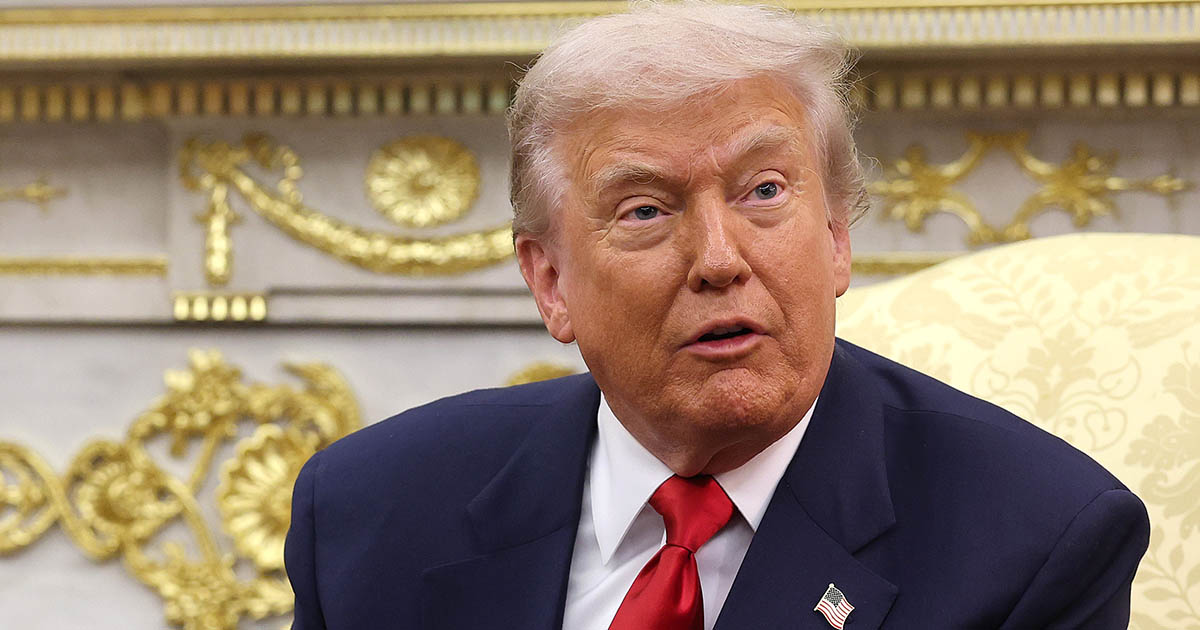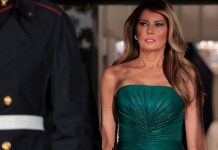Trump’s Recent Confrontation with the Press: A New Chapter in Hostility
In recent days, former President Donald Trump has once again showcased his infamous antagonism towards journalists. His latest confrontation, which involved a Bloomberg reporter, has ignited a firestorm of criticism, with many labeling it as one of the most severe instances of his media hostility to date. This incident not only highlights Trump’s incendiary relationship with the press but also raises questions about the broader implications of such encounters in a democratic society, where the press is often referred to as the fourth estate, a necessary check on power.
The Incident Unfolded
On November 14, during a flight aboard Air Force One, Trump found himself embroiled in yet another contentious exchange with the media. This time, the spotlight was on Bloomberg reporter Catherine Lucey, who posed a question regarding Trump’s connection to Jeffrey Epstein’s emails. Instead of addressing the inquiries substantively, Trump dismissed Lucey’s concerns with a derogatory remark, calling her “piggy”. This incident comes shortly after he shifted his position on the release of Epstein’s files, suggesting a growing pressure from various factions to open up the conversation about his connections to the deceased financier, who was notorious for his criminal activities involving trafficking and abuse.
Such an exchange is emblematic of Trump’s long-standing pattern of behavior, where he often resorts to personal attacks rather than engaging in meaningful dialogue. This incident not only reflects his discomfort with scrutiny but also showcases his tendency to reduce complex issues into personal slights. The question posed by Lucey was not simply about her professional role; it was an inquiry that touched on significant ethical and legal implications surrounding Trump’s past associations. By opting for a derogatory remark, Trump diverted attention from the substantive issues raised by the media.
Public Reaction and Critique
The exchange quickly gained traction online, leading to widespread outrage. Many social media users reacted vehemently, noting the irony of Trump, who has often been criticized for his own physique, using such a term to belittle a female journalist. One Twitter user succinctly pointed out the absurdity of a sitting president making such remarks, highlighting the potential double standards in political discourse. The term “piggy” not only undermined the professionalism of the press but also served as a reminder of the misogynistic undertones often present in discussions surrounding women in the media. Critics emphasized the importance of respectful communication, particularly in a professional setting. This incident was not merely an isolated verbal attack; it resonated with broader societal issues regarding the treatment of women in positions of authority. Moreover, the backlash was not limited to social media; prominent commentators, journalists, and even political analysts voiced their concerns. They underscored the implications of such behavior on public perception of the media. The normalization of derogatory language towards journalists could potentially deter young people from pursuing careers in journalism or make them wary of engaging with political figures. Ultimately, it is crucial to consider how such actions shape the landscape of journalism and democracy.

The Administration’s Defense
In response to the backlash, senior White House correspondent for MSNBC, Vaughn Hillyard, reported that Trump’s administration attempted to deflect the criticism. Officials suggested that Lucey had acted unprofessionally towards her peers on the plane, implying that she provoked the reaction. This tactic of deflection is not new for the Trump administration, which has a history of shifting blame onto journalists when faced with public scrutiny. It reflects a broader strategy of undermining the credibility of the media, which Trump frequently refers to as “fake news.” This behavior reflects a broader pattern of hostility that Trump has consistently exhibited towards the media, framing journalists as adversaries rather than essential components of a functioning democracy. By positioning himself against the media, Trump reaffirms his base’s view that mainstream news outlets are biased, thereby consolidating his influence over his supporters.
A Pattern of Behavior
This incident is not an isolated event. Trump’s relationship with the press has been tumultuous since he first entered the political arena in 2015. Just days prior to the incident with Lucey, he had publicly berated another journalist during an impromptu briefing, showcasing a clear pattern of confrontational behavior. Trump’s history includes multiple confrontations with reporters, particularly those who challenge him directly, further raising alarms among media watchdogs and advocates for press freedom. Notably, he has labeled dissenting voices in the press as “enemies of the people,” a phrase reminiscent of authoritarian rhetoric that seeks to undermine trust in independent journalism. Such behavior has prompted discussions about the implications of such confrontational rhetoric on the public’s perception of the media. The erosion of respect for journalism can have dangerous repercussions for democratic principles, as an informed electorate is crucial for holding leaders accountable. As journalists face increasing hostility, they are challenged not just by political figures, but also by the public, who may adopt a skeptical view of their work. This trend could stifle free speech and create a hostile environment for reporters, undermining the vital role they play in safeguarding democracy.
The Broader Implications
The recent confrontation has far-reaching implications, particularly in the context of Trump’s ongoing influence on American politics and media. As he continues to engage in public life, the manner in which he interacts with journalists sets a precedent for future political discourse. The normalization of such aggressive and dismissive language could embolden others in positions of power, from local politicians to corporate leaders, to adopt similar tactics. This shift risks undermining the essential role of journalism in holding leaders accountable, which is particularly concerning in an era where misinformation can spread rapidly through social media. Critics argue that this trend could stifle free speech and create a hostile environment for reporters, thereby diminishing the quality of public discourse. The implications are not merely about individual encounters; they reflect a broader cultural shift towards dismissing critical voices and questioning the integrity of the press.
Conclusion: A Call for Accountability
As the controversy surrounding Trump’s comments continues to unfold, it is crucial for both the media and the public to remain vigilant. The treatment of journalists—especially women in the field—requires a critical examination of the language and behavior of public figures. Moving forward, it is essential to advocate for a respectful and professional relationship between political leaders and the press. This incident serves as a stark reminder of the ongoing challenges facing journalists today and the need for continued support in their pursuit of truth and accountability. A robust, free press is indispensable for democracy, and it is the responsibility of all citizens to protect this cornerstone of our society.

















